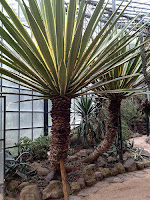Latin name: Papilio zelicaon - "pah-PILL-ee-oh ZELL-ee-con"
Size: Wingspan ranging from 52 to 80 mm (2.0 to 3.1 in)
Description: A pale yellow and black butterfly with striking blue and red spots.
Geographical distribution: Western North America
We regularly see this lovely butterfly at the gardens - it's a common butterfly of western North America. It's has a striking look - you might call it a black butterfly with a yellow stripe or a yellow butterfly with black edges. Both the upper and lower sides of its wings are black, but the upper wing has a wide yellow stripe across it There are bright blue spots on the rear edge of the rear wing, and it has tiny tails pointing down from those wings too, giving it the swallowtail name.
Bright yellowish-orange to red eyespots near the tails of each wing each contain a black pupil. This pattern is thought to be a form of mimicry where a spot on the body of an animal resembles an eye of a different animal to scare off predators, or even draw a predator's attention away from the prey's most vulnerable body parts (in this case a butterfly would rather get pecked wings than a pecked body.) They might even make the butterfly look inedible or dangerous.
The Anise Swallowtail likes open areas - bare hills or mountains, fields and roadsides, in towns and in gardens or vacant lots. From British Columbia and North Dakota at its northern extreme, south to the Baja California Peninsula and other parts of Mexico, it's occasionally also seen in the southeastern United States, but its normal range does not extend east of New Mexico.
Adult females lay eggs singly on the undersides of host plant leaves. The caterpillar starts out dark brown, almost black, with an irregular white band at its middle. After that, it becomes more green at each successive molt until it's almost all green, with markings in black, orange, and light blue. And guess what it likes to eat? Members of the carrot family, including fennel - our most hated weed - as the common name suggests. So I have to say we encourage that... more swallowtails for everyone!





































